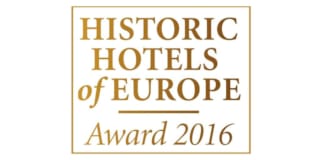Standing below the famous Trenčín Castle, Trenčín is a city of rich history. It belongs to the most important cities of Slovakia, with an abundant cultural and social life. Dominant of the city of Trenčín and the whole Váh river valley, Trenčín Castle is the venue for various concerts, medieval games and attractive night tours all year long. The castle was made famous mainly by its most powerful owner, Mathias Csaky of Trenčín, also called the "Lord of Váh River and Tatry Mountains". Maybe the most famous one is the Well of Love, 80m deep.
Monuments in the historic city centre are a part of the city monument reserve. The Roman military settlement called Laugaricio is the northernmost proof of expansion of the Roman legions of the Emperor Marcus Aurelius in Central Europe. The inscription on the steep wall of the Trenčín Castle rock carved to commemorate the victory over the tribe of Quadi in 179 is accessible to visitors today from the glass niche of Hotel Elizabeth. It is only a stone's throw from the Hotel to the most significant monuments of Trenčín.
Hotel Elizabeth, originally called "Erszebet Szalo", was built by Baron Armin Popper. It started its service on 1 January 1902, immediately becoming a part of the social and cultural life of Trenčín. In 1921, the hotel was renamed to Hotel Tatra. Gentility was met here with the perfect comfort and services of the Vienna-class venues. Celebrating its 100th anniversary, 2001 was a special year for the Hotel. The building underwent extensive reconstructions in 1987 and 1994, when it reopened its door for the guests.
From 2010 to 2012, the hotel was reconstructed to a modern business and wellness hotel, catching the interest of the most demanding business clients, at the same time maintaining the original charm of the Art Nouveau architecture and unique historic atmosphere. When you observe the unique, almost 2,000 years old, Roman inscription on the castle rock from the hotel observation terrace or restaurant, you will perfectly embrace the main idea of the Hotel: Where history meets the modern.








